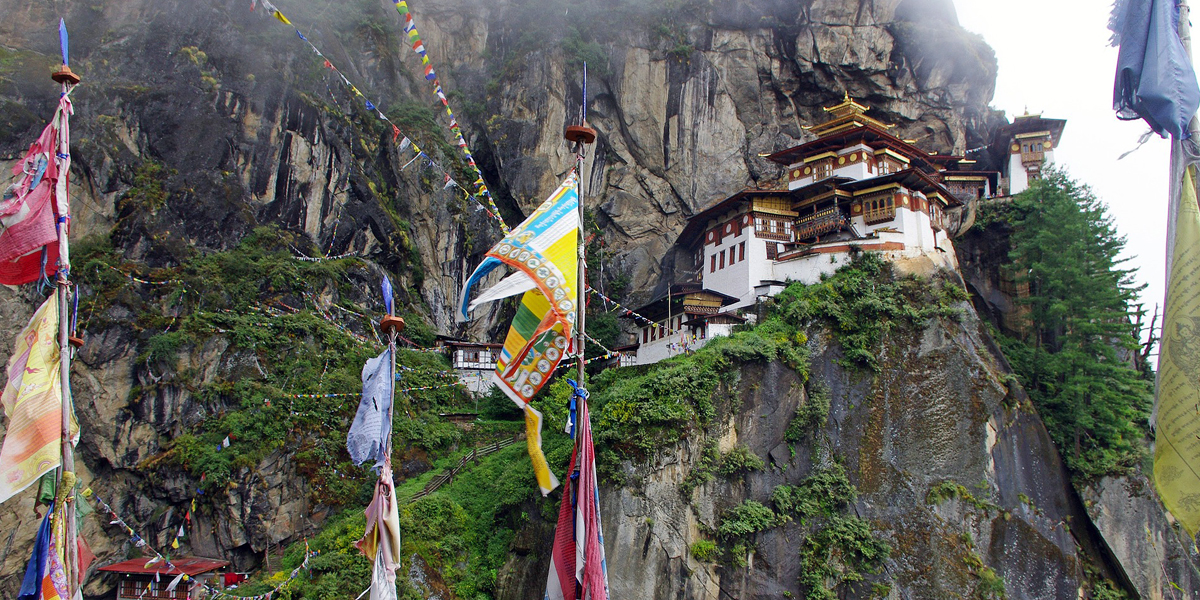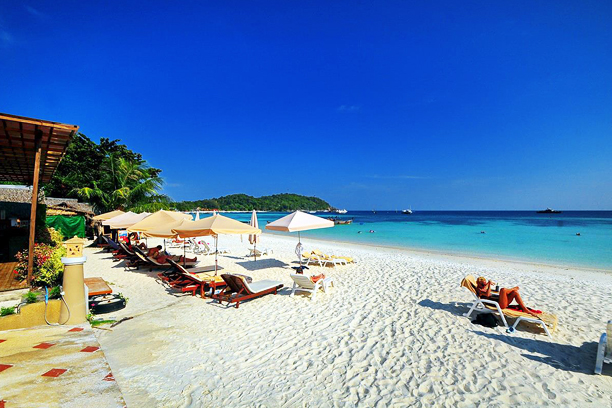Paro
Paro, a quaint valley in the regal kingdom of Bhutan is one of the must visit places in Bhutan. Deemed to be the most pictorial town in Bhutan, Paro is dotted with beautiful rice fields, stunning landscapes and sacred temples of various ages.


Located in the Paro valley of Bhutan, the eponymous town of Paro is dotted with several historical sites. Paro is the perfect destination for anyone who prefers to spend time by themselves in the lap of nature, far from the madding crowd.
Accentuating the natural beauty are the elegant, traditional-style houses that dot the valley and surrounding hills. One of the distinctive features of Paro town is that it is situated in a flat valley bottom and follows a grid-like pattern. The central plaza is adorned with a large prayer wheel and a small amphitheater where events are held throughout the year.
There are over 155 temples and monasteries in the area, some dating as far back as the 14th century. The country’s first and only international airport is also located in the region. Its close proximity to the historical and religious sites in the region has resulted in the development of an array of luxurious, high-end tourist resorts making Paro one of the main destination for visitors.
The region contains one of Bhutan’s most iconic landmarks, Taktsang Monastery, the Tiger’s Nest. This awe-inspiring temple was constructed upon a sheer cliff face, above forests of oak and rhododendrons. The national museum, Ta Dzong, is also set in Paro. An ancient watchtower that displays hundreds of ancient Bhutanese artefacts and artwork including traditional costumes, armour, weaponry and handcrafted implements for daily life. The collection at the National Museum preserves a snap-shot of the rich cultural traditions of the country. Another site worth visiting in Paro is Drugyel Dzong or The Fortress of the Victorious Bhutanese. It was constructed by Zhabdrung Ngawang Namgyal in 1646 to commemorate his victory over marauding Tibetan armies. The fortress was destroyed by fire in 1951 but the ruins remain an impressive and imposing sight.
Taktsang Lhakhang is Bhutan’s most iconic landmark and religious site. The name Taktsang translates to “The Tiger’s Nest”. This temple is one of the most holy sites in the kingdom and clings impossibly to a sheer cliff face 900 meters above the Paro Valley.
It was first built in 1692 at a cave where Guru Rimpoche meditated in the 7th century A.D. Legend states that Guru Rimpoche flew to the site atop the back of a tigress and meditated in the cave for 3 years, 3 months, 3 days and 3 hours in order to subdue evil demons residing within it. The cave has been considered a sacred site ever since and many famous saints have travelled to meditate in it.
Taktsang Lhakhang is located approximately 10 km north of Paro town at an altitude of 3.120 m. In order to arrive at the temple visitors must trek for around 2-3 hours through beautiful, shady pine forests. No trip to Bhutan would be complete without a visit to this remarkable heritage site.
The country’s first international airport is located in Paro.
Due to the close proximity of the airport and the many historical and religious sites in the region, there are a large number of luxurious and high-end tourist resorts in Paro. The international airport of Bhutan is among the top 10 most stunning and beautiful airports in the world. It is also counted among the 10 most challenging airports in the world, that only 8 pilots are certified to land the flights here. The surrounding peaks as high as 5000 m makes it a bit of challenge, and yet Paro airport is something you should eye for.
Paro is also home to the National museum. The museum is set in Paro Ta Dzong, an ancient watchtower that now displays hundreds of ancient Bhutanese artifacts and artwork including traditional costumes, armour, weaponry and handcrafted implements for daily life. The collection at the National Museum preserves a snap-shot of the rich cultural traditions of the country.
Another site worth visiting Paro is Drugyel Dzong or The Fortress of the Victorious Bhutanese.
This dzong was constructed by Zhabdrung Ngawang Namgyal in 1646 to commemorate his victory over marauding Tibetan armies. Though the fortress was destroyed by fire in 1951, the ruins remain an impressive and imposing sight.
Jangtsa Dumgtseg Lhakhang is a Buddhist temple in Jangtsa, Paro. The temple is notable as it is in the form of a chorten which is very rare in Bhutan.
It is located on the edge of a hill between the Paro valley and the Dopchari valley, across the bridge from Paro. The Buddhist iconography depicted in the Chorten is considered a unique repository of the Drukpa Kagyu school. According to a local legend, the Lhakhang was built by the saint Thangtong Gyalpo to subdue a "serpentine force" that was located at the foundation of the chorten. Another legend says that Lhakhang was built on the head of a demoness. According to a Bhutanese source it was built "on the nose of a hill that loos like a frog in order to counteract Sadag (earth-owning spirit) and Lunyen (powerful naga spirit). It is said that the hill, by which the temple is built, is a black vicious snake moving downwards.
Dobji Dzong is considered to be the first model Dzong in Bhutan. The name Dogar, which means white border, is a reference to the “Five White Boulders” in the village of Dogar.
The Dzong was built in 1531 by Ngawang Chogyal, the brother of Chojie Drukpa kuenley, who is popularly known as the “Divine Madman”. Legend has it that Ngawang Chogyal has followed the spring originating below the throne of Jetsun Milarepa in Tibet. The source of the spring was found to be a rock located on the current location of Dobji Dzong, which was then chosen for its religious significance.
There are many restaurants that offer authentic Bhutanese foods and a great experience. Traditional Bhutanese food has been influenced by its neighbours, especially China, Tibet, and India. But like the country itself, the local cuisine has been able to maintain its unique character.
A trip to Paro is not complete without some shopping in the Paro Craft Market and indulging in the local cuisine. One can find the best handicrafts and locally sourced products in the craft market, while for enjoying a savouring dish of Ema Datshi with Aru and other Bhutanese delicacies.
The period of September to November is the best time to visit Paro, when the sun is shining and skies are clear. With maximum temperature of 20 degree Celsius, this is also the best time to enjoy adventurous activities, like: trekking and skiing.
With Bhutan’s national carrier, including Druk Air and Bhutan Airlines, operating flights from Paro to India, one can reach the destination in around 1 hour 15 minutes. And, as Kolkata is the closest Indian metro-city to Paro, flights operating from here remain quite packed. Though, there are frequent Mumbai to Paro and Delhi to Paro flights as well. The only airport that operates direct flights to Paro is Bagdogra near Siliguri. However, instead of providing a direct 3-4 hours journey to Paro, the flight becomes an extended one because of a stop-journey at Kathmandu or Bangkok, which are two other airports from where Paro receives international flights.
One can also opt for a road route to reach Paro from India. Though, the whole journey from distant cities like Mumbai or Delhi is quite time consuming.
Instead of opting for a direct road journey, one can choose to fly to Kolkata and from there board the long-distance luxury buses to Bhutan. These buses go to Thimphu, from where one can take a one and a half hour car ride to Paro.
However, if one chooses to take a complete road journey, it takes a little more than 4 hours to travel from Kolkata to Paro. There are road routes from Siliguri and Bagdogra and some other North Bengal cities as well. All of these finally lead to the Jaigaon-Phuentsholing border, from where it takes 4.5 hours to drive to Paro. On the Assam side, the two places where the border is open for entry are Samdrup Jongkhar and Gelephu. Samdrup Jongkhar is the one closer to Guwahati, i.e. 2.5 hours drive away.

Book with Us and Get Best Deals in
*Terms and Conditions applied